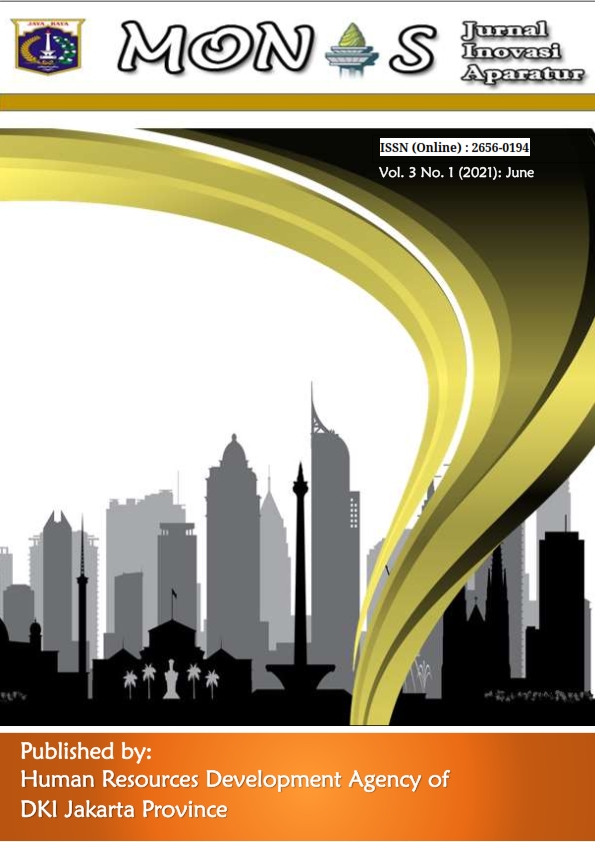Spatial analysis of training alumni distribution to support competence development in Meteorology, Climatology, and Geophysics Agency
DOI:
https://doi.org/10.54849/monas.v3i1.66Keywords:
spatial analysis, competence development, alumni distribution, bmkgAbstract
This study aims to determine the distribution pattern of training alumni and their achievements held by BMKG Training Center during the 2015-2019 period in Indonesia as input to increase competency development strategies related to employee obligations in obtaining competency development of 20 lesson hours/person / year. The theoretical approach used is to map the training alumni based on the position in which they are on duty when participating in the training based on their administrative area. The method used in this research is a quantitative method with a descriptive statistical analysis approach and spatial analysis. The data processed is training alumni of technical, functional, leadership, and CPNS basic training. Training alumni data are processed and analyzed spatially based on Geographic Information Systems using the Quantum GIS application and Map visualization using ArcGIS application. The results of this study indicate that the spatial pattern of alumni distribution is not evenly distributed. The participation rate of training alumni is still around 21% and has not been able to reach all BMKG employees. Achievement of academic hours per person per year is in the range of 29 lesson hours. The results of the Spatial Analysis shows the BMKG branch office needs to get more opportunities in improving employee competency in 17 provinces spread across Aceh, Riau Islands, Jambi, Banten, West Java, DKI, Central Java, Central Kalimantan, South Kalimantan, East Kalimantan, North Kalimantan, Bali, South Sulawesi, West Sulawesi, NTT, Maluku and Papua.
Downloads
Published
Issue
Section
License
Authors who publish in this journal agree to the following terms:
- Authors retain copyright and grant the journal right of first publication with the work simultaneously licensed under a Creative Commons Attribution-NonCommercial-ShareAlike 4.0 International License that allows others to share the work with an acknowledgement of the work's authorship and initial publication in this journal.
- The journal allows the authors to hold the copyright without restrictions and to retain publishing rights without restrictions.
- Authors can enter into separate, additional contractual arrangements for the non-exclusive distribution of the journal's published version of the work (e.g., post it to an institutional repository or publish it in a book), with an acknowledgement of its initial publication in this journal.








